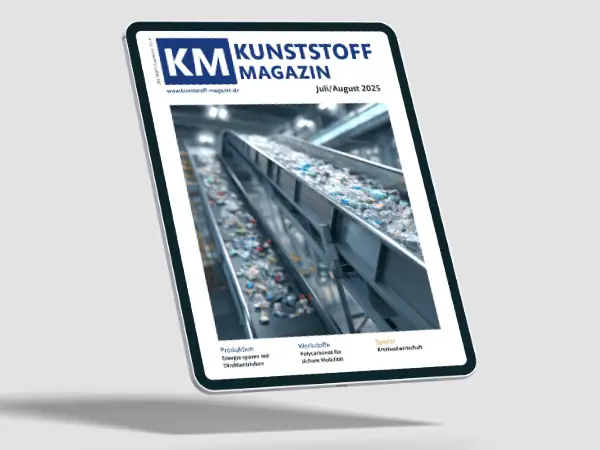rPET in Focus: Sustainability Meets Technical Limitations
Recycled PET – or rPET – is gaining increasing importance in the plastics industry. Legislative initiatives such as the EU Plastics Strategy and mandatory recycling quotas for packaging are driving its use.
However, the processing of rPET still poses challenges for many manufacturers: even with optimal injection molding parameters, issues like incomplete mold filling, flash formation, or high energy consumption can occur.
A recent industrial case demonstrates how these challenges can be overcome — without longer cycle times or reduced product quality.
The Challenge: Incomplete Mold Filling Despite Optimal Machine Settings
When producing a prototype component made from rPET, Brac-Werke encountered a typical issue: despite optimized temperature and pressure settings, the part could not be completely molded.
Common countermeasures, such as increasing pressure, did enable full mold filling — but also caused flash formation at the gate, leading to costly rework.
Raising the temperature and pressure simultaneously resulted in higher energy consumption, longer cycle times, and accelerated material degradation — all detrimental to process efficiency and sustainability.
The Solution: Polytives bFI A 3745 Additive Enhances rPET Flow Properties
In cooperation with the chemical distributor Nordmann, Brac-Werke implemented a polymeric additive solution: bFI A 3745 from Polytives.
Even a small dosage of 3–5% proved sufficient to significantly enhance the rheological properties of the rPET melt.
Key effects at a glance:
-
Reduced viscosity of the rPET melt
-
Improved flowability and complete mold filling
-
More uniform material compaction
-
Approximately 25% lower injection pressure
-
Reduced energy consumption and machine wear
“The Polytives additive exceeded our expectations — without any compromise in quality or cycle time,”
says Markus Hofer, Managing Director of Brac-Werke.
Process Engineering Optimization for Greater Efficiency and Sustainability
The targeted use of the additive resulted in a more stable, economical, and environmentally friendly production process.
The mechanical performance of the final component remained unchanged, while process stability increased noticeably.
According to Viktoria Rothleitner, Managing Director at Polytives:
“Our additives make it possible to process demanding materials like rPET economically and reliably — a key lever for greater sustainability in the plastics industry.”
Conclusion: Efficient rPET Processing Through Targeted Additive Solutions
This case clearly illustrates how the processing of rPET can be optimized from a process engineering perspective:
By using the right polymeric additives, manufacturers can improve melt flowability, lower energy consumption, and increase process reliability — all without sacrificing quality or profitability.
As a result, rPET becomes a technically and economically viable alternative to virgin polymers such as ABS, opening new opportunities for sustainable component design in the plastics sector.
Source: Polytives – Application Report, Kunststoff Magazin, July/August 2025
www.polytives.com
FAQ — How can the processing of rPET be optimized from a process engineering perspective?
1. What is “process engineering optimization” for rPET?
It means adjusting material formulation (e.g., additives), machine settings (temperature, pressure) and mold design to improve throughput, part quality and energy efficiency.
2. How can rPET flowability be improved?
By using targeted additives (polymeric flow enhancers), optimizing melt temperature and shear. Small dosages (3–5%) of suitable additives often yield major improvements.
3. Why is reduced viscosity important?
Lower melt viscosity reduces required injection pressure, improves mold filling, and lowers energy consumption and tool wear — without sacrificing part performance if the additive is chosen correctly.
4. What are the benefits of lower injection pressure?
Lower pressure reduces energy use, machine and tool wear, part warpage and rework from flash — improving production economics.
5. Do additives affect mechanical properties?
If selected and dosed correctly, additives typically do not degrade mechanical properties, but validation (tensile, impact, rheology tests) is recommended.
6. How does optimization improve energy efficiency in plastics processing?
Measures such as reduced injection pressure, shorter cycle times and less rework lower the total energy per part and improve the product’s carbon footprint.
7. What does “uniform compaction” mean?
It refers to a consistent material density across the part without voids or weak spots — achieved through good flow distribution and appropriate holding pressure control.
8. Can rPET replace virgin polymers like ABS?
Yes — with process optimization (additives, parameter tuning) rPET can be a viable substitute in many applications, provided part requirements are met.
9. What first steps should manufacturers take to work with rPET?
Perform material characterization (MFI, moisture), run pilot tests with/without additives, adapt mold and process settings, and conduct mechanical testing and LCA considerations.


Recent Comments